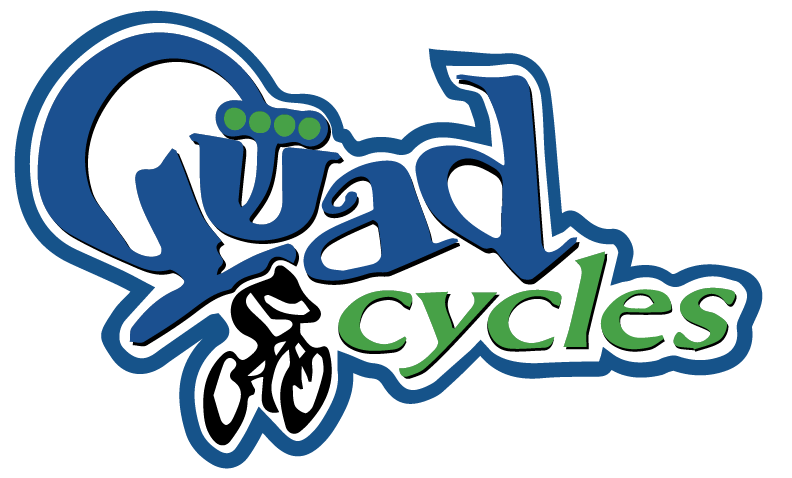I Want To Convert My Road Bike so I can do a triathlon on it. What Do I need To Do?
Are you doing one or more half or full Iron-man triathlons this year? Congratulations! We're happy to help you! You're taking on a serious challenge, and you're a cut above most athletes.
Triathlon is unique among cycling disciplines in that you need equipment for three events. We know how expensive this sport can be as a result, and we're happy to help you get equipped at a reasonable price. Converting a road bike for triathlon use can be a relatively affordable alternative to buying a new bike. The dimensions of triathlon bikes are very different from road bikes, so to convert a road bike for use in a triathlon, you need to add or replace several parts, fundamentally altering how the bicycle fits you.
Here's what you'll need to accomplish that conversion.
1) Optimization Fit, Level 2: $250
Your road position might be perfectly comfortable if you're only cycling, but for triathletes, there's one major problem with a road position: you have to hold yourself up with constant muscle tension. As a result, your quads, glutes, and core muscles will be under greater stress than necessary, your body will produce more lactic acid, and you're going to find running extremely difficult to impossible after three and a half to seven hours of cycling if your position isn't optimized. One of our F.I.S.T. certified fitters can perform an Optimization Fit with you on the GURU Dynamic Fit Unit (DFU), which will allow us to find your best possible position as a triathlete and determine how we need to alter your road bike to match that position.
Please be advised that not every road bike that fits its rider can be converted for triathlon use. If we find that your current bike can't be modified to fit, we can still provide recommendations for triathlon bike models and sizes that will fit you.
2) Zero-setback or set-forward Seat-post, $60-300
In order to relieve pressure on a rider's lower body, triathlon bikes move pressure to the upper body. To do that, the seat needs to come forward, and most stock road seat-posts are designed with some setback, moving the center of the saddle towards the back of the bike. A zero-setback or set-forward seat-post will allow us to move the seat into a more acceptable range of possible positions.
3) Triathlon Saddle, $100-300
Road bike saddles are typically relatively firm and narrow at the nose for a couple reasons: first, a firm platform is more supportive for road biking, and second, most road cyclists produce increased power by moving further back for more leverage on the cranks. Riding towards the nose is less efficient for most road cyclists. In triathlon, your shorts are less padded for more swimming and running comfort, and triathletes tend to increase efficiency by becoming more compact and aerodynamic over the bike; to do that, you need to ride on the nose of the saddle. Triathlon saddles are more padded and lower-pressure at the nose, and one tri-specific design or another will be absolutely necessary for your comfort during and after the ride.
4) Aerobar extensions, $70-200
They'll make you more aerodynamic, which is very important since you're not allowed to draft. More importantly, a properly fitted pair of aerobars will make your riding position more relaxed by placing most of the burden of supporting your position on the bike onto your skeletal structure. Every little bit of saved energy and slightly more relaxed muscles will count, both on the bike and off of it.
5) Replacement stem, $60-200
As mentioned above, a good road bike fit is very different from a good triathlon fit, both in the back half and the front half of the bicycle. Aerobars' major contribution to riders' comfort is the ability to take pressure off muscles by putting a rider's weight on their skeletal structure, rested atop foam pads and hanging onto extensions to hold oneself in place. In order to do that, though, you need to replace the stem to have those pads and bars considerably closer to you than they'd be in a traditional road cycling position, and lower than usual to get some assistance from gravity to put your weight where it needs to be.
Estimated total cost with labor: $700 - $1400
Most triathlon bikes on the market cost at least $2500, so if you already have a road bike, the conversion process can be a relatively affordable alternative. All else being equal, a properly fitted triathlon bike will always be more comfortable, efficient, and aerodynamic than a converted road bike, simply because the triathlon bike was designed to fit you the way you need it to without being heavily modified. Overall, however, a converted road bike will be much better for the event and your enjoyment than a conventional, unaltered road bike can ever be, so if you're on a budget, the conversion is worth the expense.
Back To Bike Fitting

